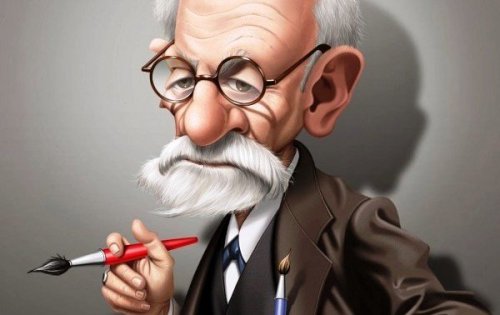Currently, there are many different types of psychoanalytic psychotherapies, as a lot has happened in the field of psychotherapy since Freud created orthodox psychoanalysis in 1896. They maintain some of the bases of their Freudian roots but also disagree with them to some extent. Psychoanalytic psychotherapies emerge as variants of the psychoanalytic type of cure. In fact, the demand for psychological care increased after World War II. Thus, the goal was to increase effectiveness and shorten the time.
Gradually, psychoanalytic psychotherapy became a specialty and therapy of choice for many patients. The classical psychoanalytic current analyzed in depth what they referred to as “transferential neurosis”, as well as its multiple foci. As you can see, they were dense therapies that extended over many years.
In contrast, more recent psychoanalytic psychotherapies are now way shorter because the therapist is more active. They focus on the pathological and determinant cores of the current conflict that a given patient brings to consultation. Another goal is to strengthen the healthy aspects of their patient.
Some authors disagreed with Freud in the sense that they realized the duration of therapy wasn’t proportional to the depth or duration of change. Alexander and French were two of them and proposed therapeutic success as an indicator of the “corrective emotional experience” provided by the therapeutic relationship. Thus, this alliance or relationship becomes a fundamental ingredient in any new ones.
“In Hollywood if you don’t have a shrink, people think you’re crazy.”
-Johnny Carson-
Current psychoanalytic psychotherapies
Balint’s brief or focal psychotherapy
This is also referred to as psychotherapy of limited time and delimited objective. With it, the patient and therapist delimit a specific and circumscribed focus to address it in depth. The particular area of the patient’s problem is the focus and expression of their symptoms, highlighting the most vulnerable parts. Therefore, the therapeutic success will depend on specifying the conflictive focus and getting the patient to focus on it.
Sifneos’ short-term anxiety-provoking psychotherapy (STAPP)
Sifneos distinguishes two types of brief psychotherapy: one anxiolytic or supportive and the other based on an anxiogenic approach. The therapist exposes the patient to provocative confrontations and interpretations. They do so in order to induce anxiety and achieve a strong alliance as they face it.
Emotional re-education and learning skills are sought through the oedipal registration of the transference. There are between six and 15 sessions. Also, it’s necessary for patients to present a circumscribed central complaint and high motivation.
Malan’s brief psychotherapy
For Malan, the focus or focal point is a formulation that contains the symptoms and unresolved psychodynamic conflicts. It starts from the idea of two triangles on which interpretation and insight should run. These are the triangle of conflict and the triangle of persons.
The unconditional acceptance of a given patient promotes insight and corrective emotional experience. In addition, change occurs through active dream interpretation, fantasy, and transference.
Mann’s time-limited psychotherapy
Brevity, immediate ending, and detachment are the central elements here. There are 12 sessions, the perfect time for psychodynamic events to occur and be explored and resolved.
The therapist selects a central current conflict, one related to the patient’s history. Then, the patient learns to master separation anxiety and it serves as a model for overcoming other anxieties.
Psychoanalytic psychotherapies – Davanloo’s intensive short-term dynamic psychotherapy
This is a more systematized, applicable, and widespread model. This is because it considers a broad focus in which to identify, dismantle, and obtain the manifestation of unconscious feelings of the patient’s transference defenses and resistances.
Thus, the focus here is on anger and rage. The patient is to express it all freely with reinforcement. Thus, it’s a reaffirmation and desensitization. It’s a deactivation of the unconscious by early and systemic interpretation of the triangles of intrapsychic conflict and relationships.

Bellak’s intensive brief and emergency psychotherapy
This treatment only lasts five to six sessions. Its base is the paradigm of emergency medicine and it requires specific skills and experience. The therapist selects targets, not patients.
Conclusions on psychoanalytic psychotherapies
The traditional psychoanalysis of Sigmund Freud is the prototypical one, but it isn’t superfluous to know the different psychoanalytic psychotherapies out there. Indeed, they’re based on the most orthodox psychoanalysis, even though they’re dissociated from it in some parts. The number of sessions, for example.
They also differ in the fact of focusing on a goal to resolve, instead of attending to all the material a given patient brings to therapy without a common thread. Thus, they focus more on the patient’s present and their current conflicts, instead of giving so much importance to their past.
Many psychoanalytic psychotherapies are currently in the experimental phase for many disorders. However, they’re definitely useful for disorders in which there are family implications, such as anorexia, schizophrenia, and some personality disorders.
The post The Various Types of Psychoanalytic Psychotherapies appeared first on Exploring your mind.


















Comments